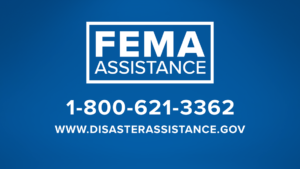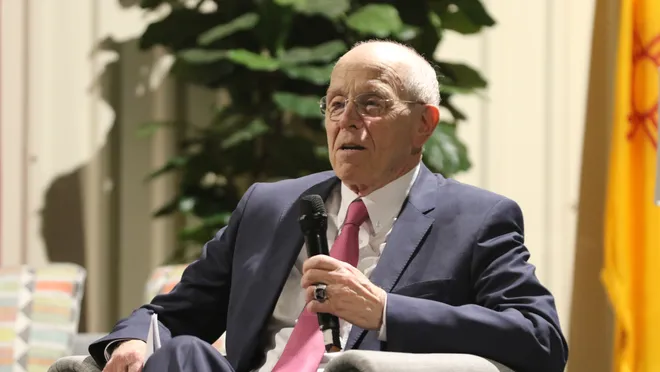 People in 77 Texas counties can now apply for disaster relief with FEMA. Here is how they can help, and how you can get started.
People in 77 Texas counties can now apply for disaster relief with FEMA. Here is how they can help, and how you can get started.
TEXAS, USA — Texans affected by last week’s freezing weather can now get help from FEMA after President Joe Biden signed a disaster declaration for the state. Here is a look at exactly how the federal government can help Texans, and how you can get started.
As a general rule, recipients must find out what their insurance company is able to cover before asking the government for assistance. A FEMA press release states that, by law, FEMA cannot duplicate benefits for losses covered by insurance. It says If insurance does not cover all your damage, you may be eligible for federal assistance.
Dr. Dre Recovering After Suffering Brain Aneurysm | Billboard News
featured by
People in the 77 covered counties (listed at the end of the article) can start the process by going to www.disasterassistance.gov and clicking on the “Find Assistance” link. The user can then fill out categories they think they will be eligible for and see a list of resources, though not all resources are disaster-related or connected with the federal Government.
Credit: 6 News
Here are the most common options available to most Texans:
Your home was damaged by the freezing weather
People who had home damage in the freezing storm have two main options: Home and Property Disaster Loans though the Small Business Administration and the FEMA Individuals and Households Program (IHP) – Housing Assistance program. Start the application for both kinds of loans at www.disasterassistance.gov with the blue “Apply Online” link or call 800-621-3362.
The Home and Property Disaster Loans are low interest, long-term loans for losses not fully covered by insurance or other means. They allow residents to borrow up to $200,000 to repair or replace your primary home to its pre-disaster condition. You cannot use the loan to upgrade or add on to the home unless required by building code. In some cases, SBA may be able to refinance all or part of a prior mortgage. Second homes and vacation properties are not eligible. Certain rental properties may qualify for a business disaster loan.
According to this FEMA website, the FEMA Individuals and Households Program (IHP) can help with home repair by providing financial assistance to homeowners to repair disaster-caused damage to their primary residence, when the damage is not covered by insurance, to make the home safe, sanitary, and fit to occupy. It can also provide financial assistance to homeowners to help replace their home destroyed in the disaster, when the damage is not covered by insurance.
You were displaced by the freezing weather.
Again, the FEMA Individuals and Households Program (IHP) – Housing Assistance program is your best bet. Start the application for both kinds of loans at www.disasterassistance.gov with the blue “Apply Online” link or call 800-621-3362.
According to this FEMA website, the program provides temporary Housing Assistance allowing homeowners or renters to rent a temporary place to live if your home is unlivable because of the disaster, and you have no insurance coverage for temporary housing. If there are no rental properties are available, as a last resort, a government housing unit may be provided in some areas. The program also offers reimbursement of hotel expenses for homeowners or renters for short periods of time due to inaccessibility or utility outage, if not covered by insurance or any other program.
Your business was damaged by the freezing weather
People who had their place of business damaged can apply for Business Disaster Loans with the U.S. Small Business Administration. Business owners also need to start the application process at www.disasterassistance.gov with the blue “Apply Online” link or call 800-621-3362.
The program provides help in the form of low-interest, long-term loans for losses not fully covered by insurance or other means. The FEMA site states that SBA’s disaster loans are the main federal assistance offered to repair and rebuild non-farm, private sector disaster losses. Businesses of all sizes as well as private non-profit organizations may borrow up to $2 million to repair or replace the following:
- Damaged or destroyed real estate
- Machinery and equipment
- Inventory and other business assets.
In some cases, SBA may be able to refinance all or part of a prior mortgage or lien. They may also be able to increase the loan up to 20% of the confirmed physical losses. The SBA offers Economic Injury Disaster Loans (EIDL) up to $2 million to help meet working capital needs caused by the disaster.
You can apply directly to the SBA by creating a DisasterAssistance.gov account.
Your lost food due to outages or other problems caused by freezing weather
Low-income families that lost food during the weather disaster can get help through the Disaster Supplemental Nutrition Assistance Program (D-SNAP). Individuals looking to sign up for this program can start by contacting the state SNAP office. Find information here.
The D-SNAP program is available as long as the U.S. Department of Agriculture’s Food and Nutrition Service (USDA FNS) approves states to operate in a disaster area.
Recipients will get an Electronic Benefits Transfer (EBT) card which they can use just like a debit card to buy food at most local grocery stores. People may qualify for the D-SNAP program if they have need to pay for home or business repairs, temporary shelter expenses, and evacuation or relocation expenses among other qualifications. More information is available here. Check the “Food” box in the first question.
You are stuck with an unaffordable utility bill.
Texans that were on a variable-rate plan with their electric company may have seen their electricity costs skyrocket after power was restored. The Low Income Home Energy Assistance Program (LIHEAP) program may be able to assist with those bills.
This program partners with local state agencies to distribute the money. Texans can go to This Texas Department of Housing website. Click the circle next to “Utility Bill Payment Help” and then search for your city and county at the bottom of the page.
To learn more about LIHEAP and how you can apply, FEMA states to contact the National Energy Assistance Referral (NEAR) project: Call 1-866-674-6327 or TTY 1-866-367-6228, or Email NEAR at energyassistance@ncat.org.
Additional options for help
People affected by the weather in a declared area can get more time to pay their taxes. More information here.
The counties included in the declaration are: Angelina, Aransas, Bastrop, Bee, Bell, Bexar, Blanco, Brazoria, Brazos, Brown, Burleson, Caldwell, Calhoun, Cameron, Chambers, Collin, Comal, Comanche, Cooke, Coryell, Dallas, Denton, DeWitt, Ellis, Falls, Fort Bend, Galveston, Gillespie, Grimes, Guadalupe, Hardin, Harris, Hays, Henderson, Hidalgo, Hood, Jasper, Jefferson, Johnson, Kaufman, Kendall, Lavaca, Liberty, Madison, Matagorda, Maverick, McLennan, Montague, Montgomery, Nacogdoches, Nueces, Orange, Palo Pinto, Panola, Parker, Polk, Rockwall, Sabine, San Jacinto, San Patricio, Scurry, Shelby, Smith, Stephens, Tarrant, Travis, Tyler, Upshur, Van Zandt, Victoria, Walker, Waller, Wharton, Wichita, Williamson, Wilson, and Wise.
Source: https://www.kcentv.com/article/news/local/fema-can-help-you-recover-from-after-texas-winter-storm/500-2669f2d4-f88b-41f5-bec2-b6fce3cfe00c




0 Comments